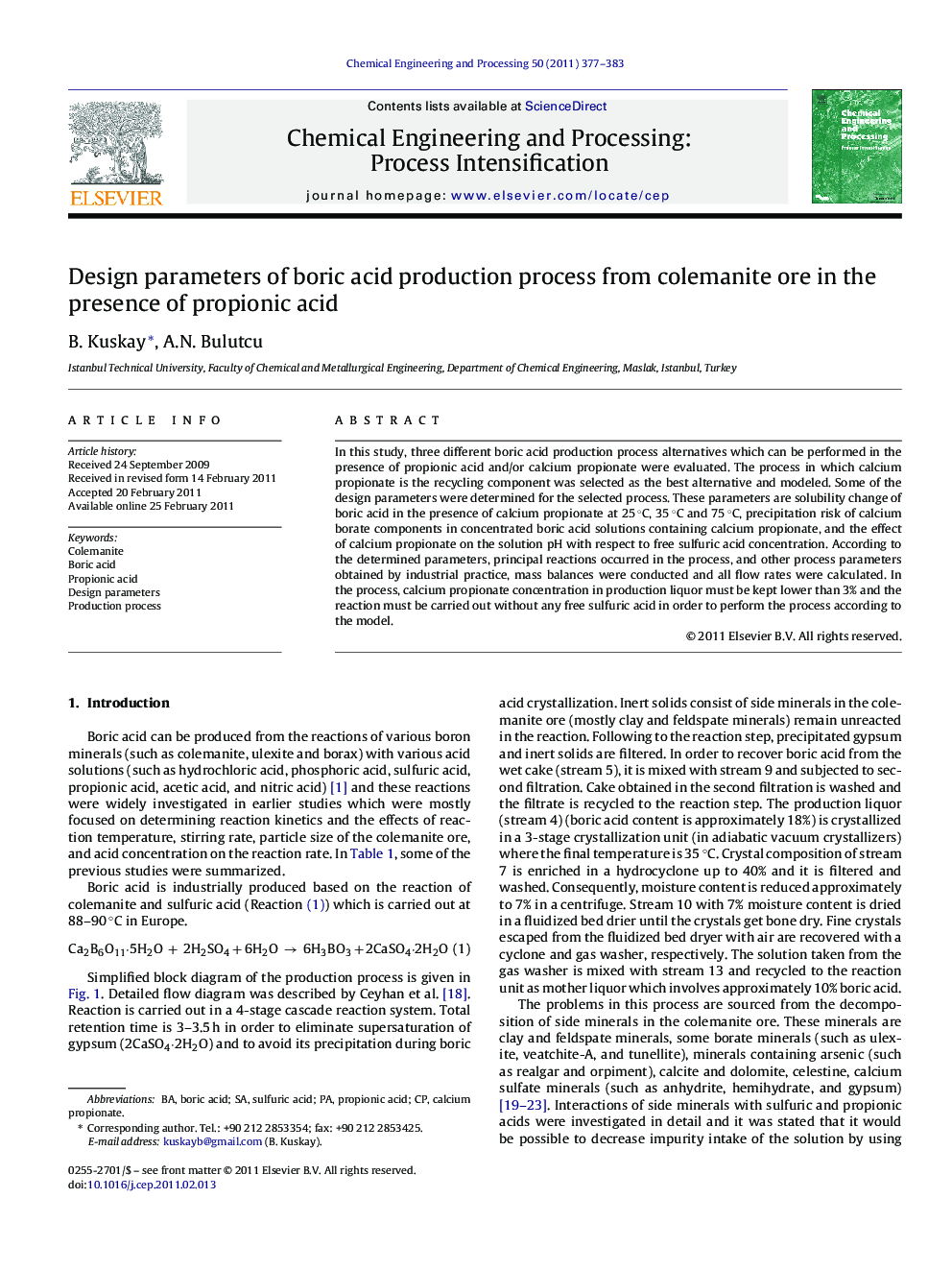| Article ID | Journal | Published Year | Pages | File Type |
|---|---|---|---|---|
| 688416 | Chemical Engineering and Processing: Process Intensification | 2011 | 7 Pages |
In this study, three different boric acid production process alternatives which can be performed in the presence of propionic acid and/or calcium propionate were evaluated. The process in which calcium propionate is the recycling component was selected as the best alternative and modeled. Some of the design parameters were determined for the selected process. These parameters are solubility change of boric acid in the presence of calcium propionate at 25 °C, 35 °C and 75 °C, precipitation risk of calcium borate components in concentrated boric acid solutions containing calcium propionate, and the effect of calcium propionate on the solution pH with respect to free sulfuric acid concentration. According to the determined parameters, principal reactions occurred in the process, and other process parameters obtained by industrial practice, mass balances were conducted and all flow rates were calculated. In the process, calcium propionate concentration in production liquor must be kept lower than 3% and the reaction must be carried out without any free sulfuric acid in order to perform the process according to the model.
► In all three models, presence of propionic acid or calcium propionate leads to increase pH of media and decrease the decomposition rate of clay and feldspate minerals. If the precipitation risk of calcium borate component is avoided and boric acid crystals are washed effectively, it was found out that the third model, in which calcium propionate is the recycling component is more advantageous. ► Although precipitation of calcium borate in high concentrations of calcium propionate is a disadvantage, increase in boric acid solubility in low calcium propionate concentrations which will avoid the crystallization of boric acid during the filtration of gypsum and inert matter is an advantage. ► If the solution contains calcium propionate more than 3%, calcium borate precipitation will begin in less than the retention time applied in the reaction stage, which is 180–210 min. It can be concluded that calcium propionate concentration must be kept below 3% in the production liquor in order to avoid uncontrolled calcium borate precipitation. ► Dramatic change in pH with respect to sulfuric acid concentration verifies that, in order to carry out the continuous reaction according to the model, pH in the first reactor must be kept in 4.3 and 3.7 to obtain 1.26% and 2.24% calcium propionate concentration, respectively.
